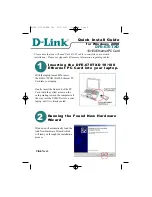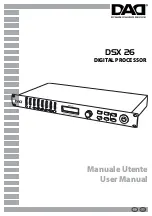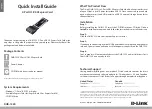
16
All three options will provide noticeable change in EQ. We suggest you use the first two listed options.
In either case, an EQ change is still followed by a
dynamically
controlled stage. Therefore any excessive EQ change
can be 'undone' by the subsequent AGC or Limiter.
The last option, adjusting the
Mixer
, is designed to provide a final
minor
trim to the spectrum. If you've noticed that
we calibrated these controls in 0.10 dB steps, then you know what we mean when we say these controls are for fine
trim!
Since this stage is
after
all of the dynamic AGC and Limiting, a radical change in level in the
Mixer
will result in
additional and possibly excessive final limiting or clipping distortion of audio in that band. We suggest that changes
implemented here be limited to no more than about 1.0 dB. Naturally, the decrease in mix level can be done to any
desired amount.
Thunder Bass
Omnia.ONE FM has the power to shake the walls with low end! If your source material has it, Omnia.ONE FM can
expose that deep bass and do it with muscle! Tailoring Thunder Bass for more dominance is simple, and is done by
adjusting the following parameters and in the order listed:
1.
Increase the amount of
Bass
boost in the
Enhancers
section.
2.
Increase the
Drive
to the
Low Frequency Limiter.
3.
Increase the
Release
setting in the
Low Frequency Limiter.
4.
Increase the
Drive
to the
Bass Clipper.
Just as in the section on ‘overdoing’ processing, again moderation is the key. If all of the above changes are made in
unison there is a possibility of severe low frequency buildup. This would unbalance the audio spectrum and produce
the illusion of “lost” presence and high frequencies.
Generally, an increase in the Bass boost alone will provide a sufficient enhancement to the low end. Bass
adjustments should typically be done after selecting the preset you wish to use.
AM Style
Welcome to the OMNIA.ONE AM!
Don’t let the small single-rack sized package fool you! Omnia.ONE’s new hardware platform allows us to pack
more power in its single rack space than the original Omnia had in three!
This chapter explains generally how to alter the sound of the Omnia.ONE AM using the factory presets, and if
desired, using the controls explained in the
Adjust Processing
section of Chapter 4, to alter those presets and create
custom user presets.
Using Omnia.ONE AM with Early PWM Transmitters
Certain PWM (Pulse Width Modulation) transmitter designs may exhibit a condition that can be exaggerated by the
extremely dense output of the Omnia. This condition is often referred to as the “cliff effect”.
These transmitters have a hard time dealing with linear response to high negative modulation levels and may show a
runaway condition when called upon to produce heavy negative modulation approaching 100 percent.
This effect can be seen by applying a steady 1 kHz tone to the transmitter at slightly less than 95 percent negative
modulation. Observe the modulation monitor closely as you
slowly
advance the modulation level to 100 percent.
















































